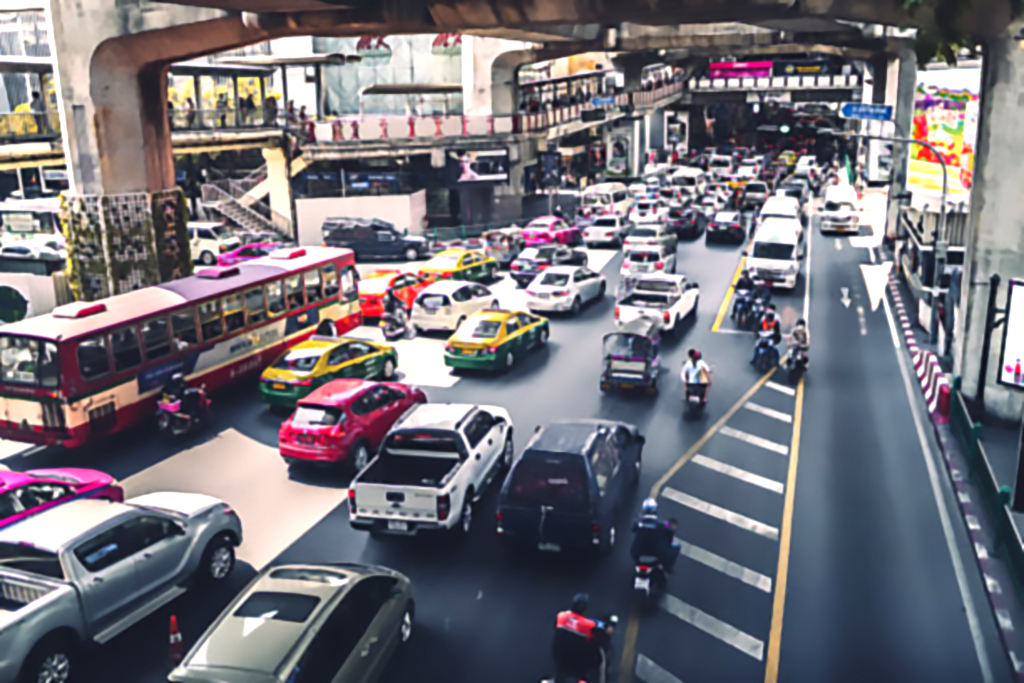What actually happens while
driving on Thai roads?
Navigating the roads in Thailand can be a thrilling experience. However, it is important to understand and follow the country’s traffic rules to ensure a safe and enjoyable journey. Unfortunately, you will always find drivers with bad driving habits on the road in Thailand. So, whether you’re a resident or a visitor, familiarizing yourself with Thai traffic laws is crucial for responsible and safe driving. Let’s delve into some key aspects of traffic regulations in Thailand.
CONTENTS
- Driving Side and Road Conditions
- Traffic Signals and Signs
- Right of Way, Overtaking, and Lane discipline
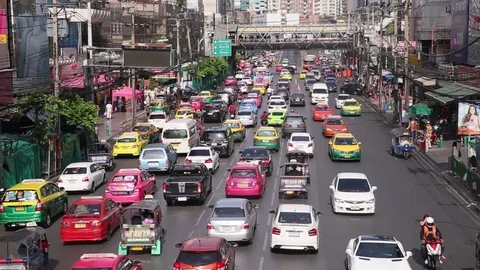
1. Driving Side and Road Conditions
In Thailand, vehicles drive on the left-hand side of the road. It is important to be aware of this if you are accustomed to driving on the right side. The road conditions vary from well-maintained highways in urban areas to narrower, winding roads in rural regions. Always beware of vehicles driving against the traffic. Exercise caution and adapt your speed accordingly to ensure safety.
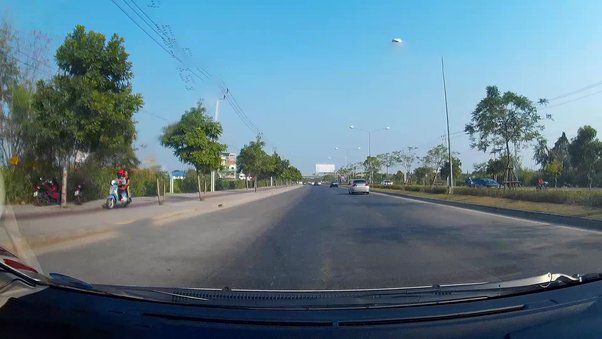
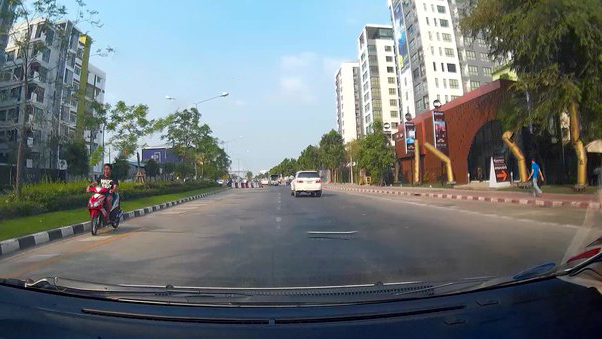
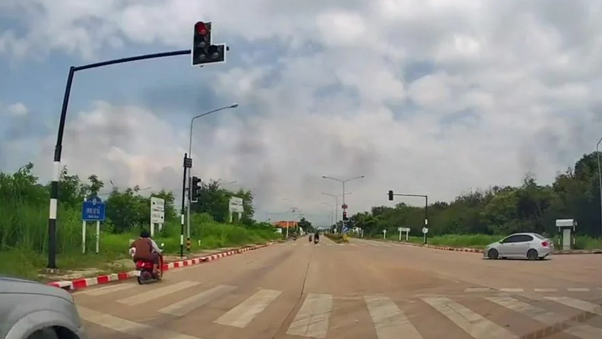
Driving against traffic, also known as wrong-way driving, is a perilous violation of traffic rules that poses a significant threat to road safety. Unfortunately, this dangerous practice is witnessed in Thailand. Motorcycle drivers in Thailand do this at will. And sometimes, you may see Tuk-tuks (3 wheeled-vehicles) and cars doing the same thing. Therefore, it is imperative to exercise maximum anticipation when you want to drive in Thailand.
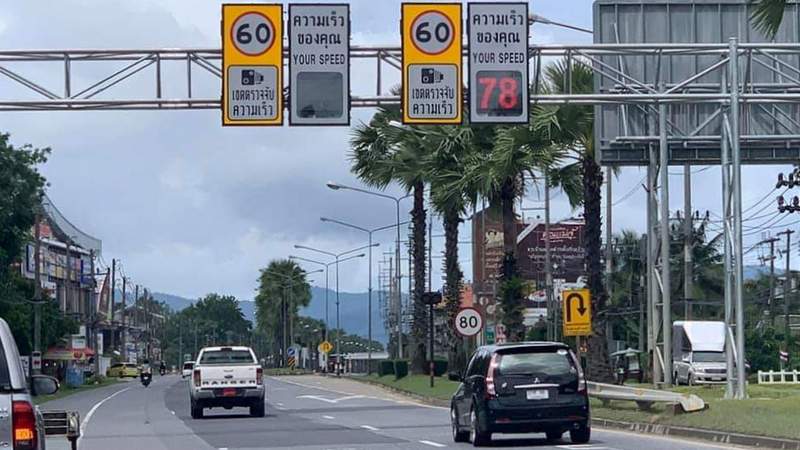
2. Traffic Signals, Signs and Driving Speed Limits
Thailand uses standard international traffic signs and signals. Familiarize yourself with common signs for speed limits, stop signs, no entry, pedestrian crossings, and other essential traffic instructions. Speed limits vary depending on the type of road and location. In urban areas, the speed limit is generally around 60-80 km/h (37-50 mph), while on highways, it can range from 90-120 km/h (56-75 mph). Always adhere to posted speed limits and adjust your speed based on road conditions.
Be aware that in Thailand, drivers seem to treat speed limit signs as a guideline and not a restriction. Moreover, they always seem to think that if the road ahead is free, you can drive as fast as you like. Even though the maximum speed limit is 120 km/h. You will certainly find these drivers when you are on the expressway. They are the ones who are tail-gaiting you even when you are already driving at 120 km/h on the fastest lane.
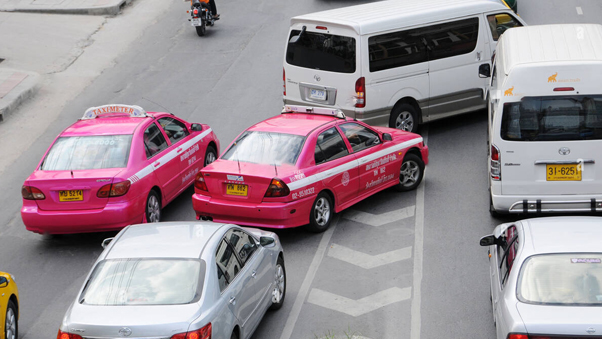
3. Right of Way, Overtaking, and Lane Discipline
In general, vehicles already on the main road have the right of way. However, always exercise caution and yield when needed to ensure smooth traffic flow and safety. Overtaking should always be done with caution, using indicators and ensuring that the road ahead is clear. Stay in your lane and obey lane markings to maintain orderly traffic flow.
Thailand drivers in the majority are aggressive drivers. Especially the delivery transports. Whether it is a motorcycle delivery driver or a pickup truck driver. Always anticipate that they are going to do something out of regulation. In that way, you can always remain a defensive driver.
Conclusion And Recommendation
In conclusion, it is highly recommended not to drive unless you really have to when you are in Thailand. For so many reasons, driving in Thailand can prove to be more challenging than driving in your own country. If you are a foreigner and a tourist in Thailand, there is public transportation that you can avail of. The overhead trains (BTS) and the subway (MRT) are the best way to get around the city of Bangkok. You can also take the Airport Link. An overhead train service that will take you straight to Suvarnabhumi Airport. Regular taxi cabs, motorcycle taxis, and tuk-tuks (3-wheeled vehicles) are also available. The motorcycle taxi is the fastest mode of transportation in Thailand.
Driving in Thailand can be an exciting adventure, but understanding and abiding by traffic rules is essential for the safety of all road users. Stay informed, follow the regulations, and enjoy a smooth and pleasant driving experience in the beautiful landscapes of Thailand. Safe travels!
